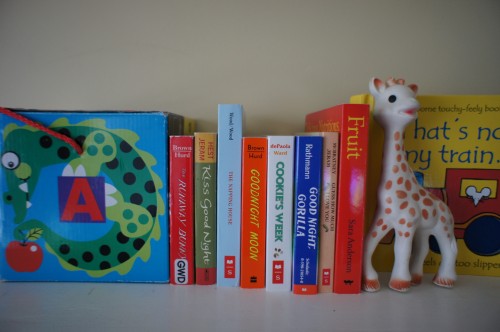I love stories. As a new mom and a writer, I couldn’t wait to introduce my little boy to books. Now my heart swells with joy as I see how he has graduated from chewing on the covers to giggling as he turns the pages and points to the pictures. As I read to him I’m taken back to my childhood with the sweetness of some favorite stories. A mouse hiding a strawberry, a little bear waiting for a goodnight kiss, a curious monkey, a little bunny saying goodnight to the moon, or a boy who becomes king of the wild things.
These stories are simple, sweet and have more in common than just pulling our nostalgic heart strings. I couldn’t help but make some comparisons to see how I might add something to my own writing.
However you feel about children’s books, as a writer they stand as a great reminder that it can be a good thing to scale back to the basics of your story. Here are some tips on plot and structure based on children’s books.
What makes a children’s book a children’s book is the simple concepts, limited characters and usually one main message…oh, and of course lots of pictures!
Several characters, multiple settings, emotional story arcs, messages and themes, layers upon layers of plot and sub plots. Adult reading can sometimes get cumbersome. Here’s a few steps to take it back to the basics:
1. Pick one purpose and stick to it. Kiddos at this age (0 – 3) don’t have the capacity or attention span to follow multiple story lines.
2. Limit your characters. There’s a reason there are only 3 bears. Too many main characters = too hard to follow!
3. Bright, simple colors and lots of pictures! Don’t weigh your story down with text.
4. Everything is black and white. The real world may have grey areas, but not for kids.
5. Bad guys never win.
So here’s what it boils down to, simple plot, simple characters, simple writing. While this may not apply to your current novel (which I assume will have many complex characters and twisty, turny, curvy plots and sub plots), it’s a great way to start the bones of your next story. Before developing your next plot, try outlining it in children’s book form, meaning, giving it a beginning, middle and end and have no more than three characters and one message to start. Once you have the skeleton laid out, you can put meat on his bones with more gown up text. But remember, we all start as babies, maybe it could help to let our stories start the same way!





